We have all heard phrases like ‘Cut to the chase’ and ‘It’s raining cats and dogs’ but did you know that these and other popular sayings have their own interesting and distinctive origins?
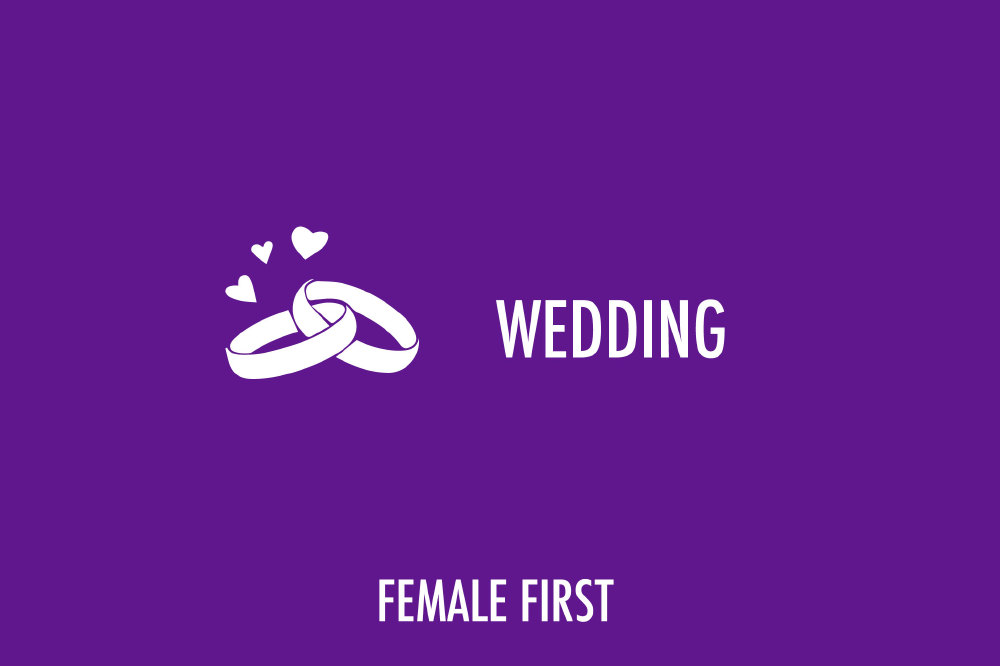
Weddings on Female First
Some idioms are fairly self-explanatory while others are completely absurd and will likely leave you scratching your head! But regardless of how strange many may seem, these popular phrases are sure to remain a staple of the English language and will continue to develop over time.
To help visualise some of the more romantic and whimsical idioms hitched.com have worked with an illustrator to bring the language of love to life. So, why is it that we ask for a hand in marriage and not a head or a heart? It’s time to find out.
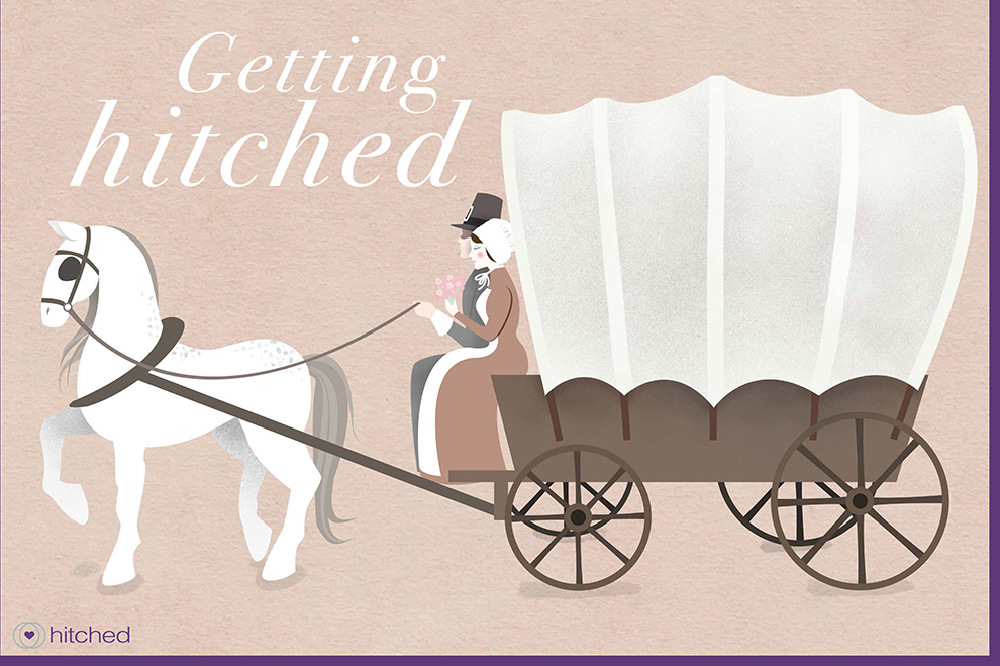
Meaning: To get married.
In the late 1500s to early 1600s this phrase, which originated in America, was used to describe the act of tying horses to wagons. It soon became a term for marriage to show that two people were being tied together just like a horse to a wagon.

Meaning: To ask someone to marry you.
Historically marriage was a way of securing wealth and creating or maintaining important relationships. Often, along with a new bride, eligible suitors would receive land or large sums of money. The deal was ultimately sealed at the altar and the term refers to when the bride’s father hands his daughter over to her new ‘owner’.
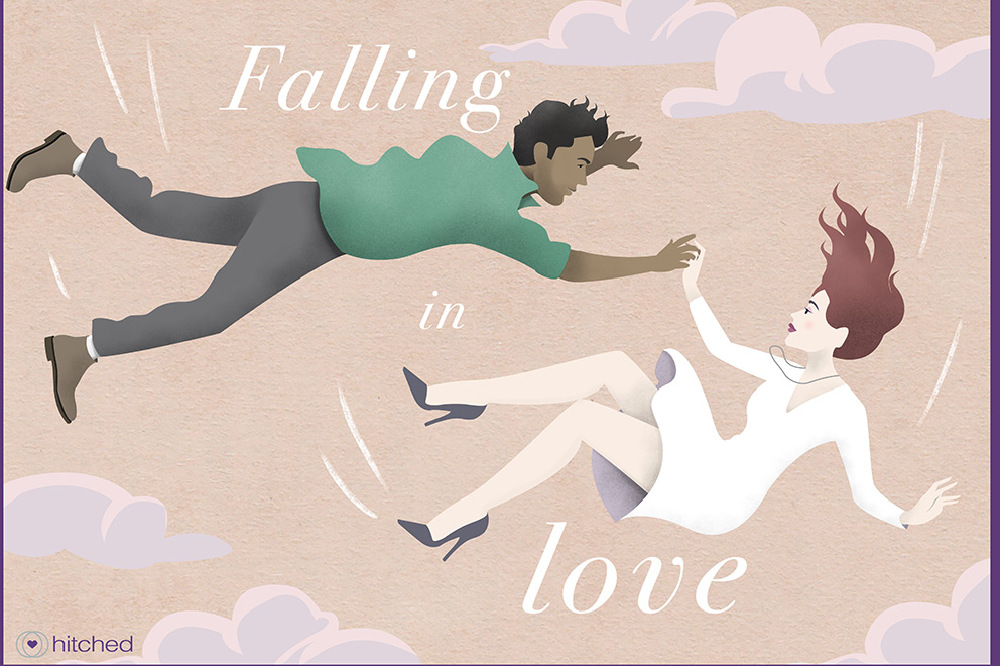
Meaning: To start to feel love for someone, or something.
This popular phrase is used to explain the beginnings of love because, just like a physical fall, falling in love is usually unexpected, unplanned and a bit of a shock!
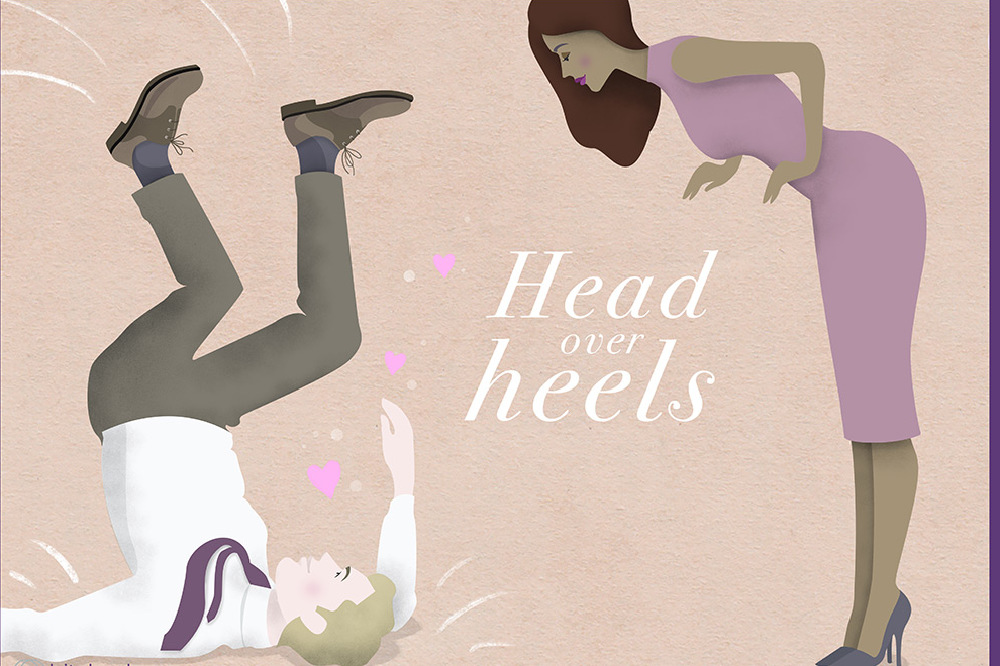
Meaning: To fall deeply and completely in love, especially when it happens suddenly.
The origins of this phrase came from the saying ‘heels over head’ which was used to describe someone who had fallen badly. In the late 1700s it became ‘head over heels’ and referred to falling in love.
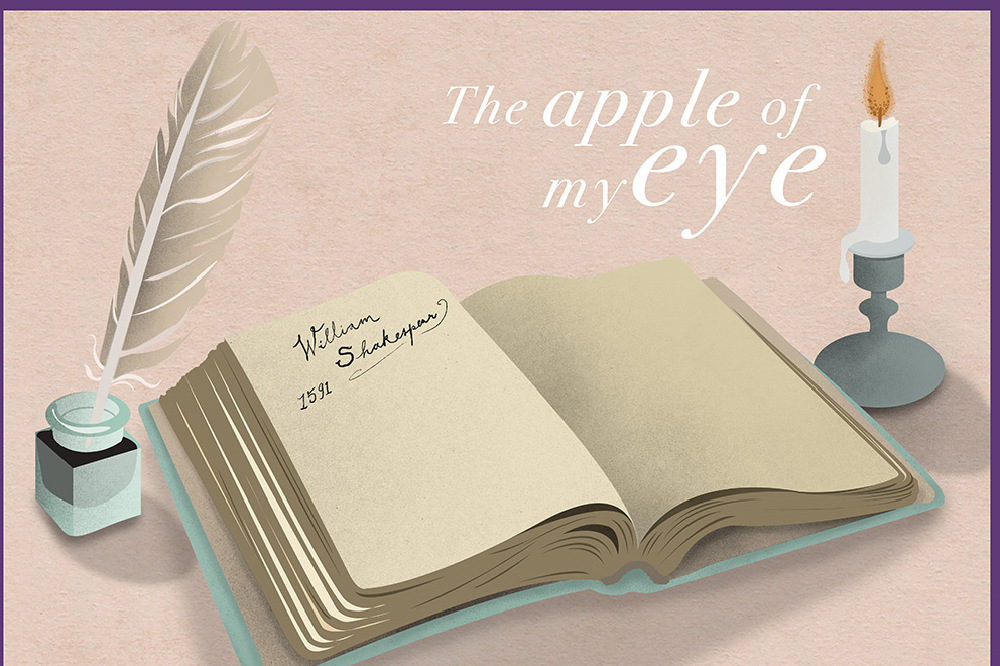
Meaning: The person of whom one is extremely fond of.
The first known use of this expression was in work attributed to King Aelfred of Wessex in 885 AD, in which he used it to describe the central aperture of the eye. Later, in 1600, Shakespeare used the phrase in A Midsummer Night’s Dream and it was also used in 1611 in the English translations of the bible. However it wasn’t until 1816, after the phrase was used in a novel by Sir Walter Scott, that it surged in popularity.
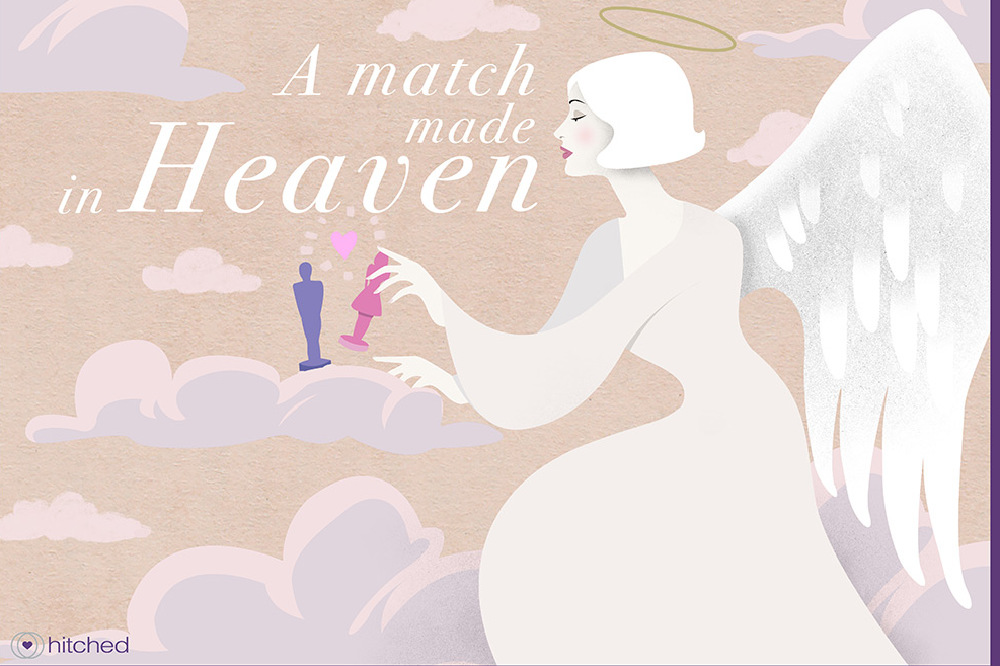
Meaning: Two people who are perfect for each other.
This phrase is based on the belief that godly forces play a role in bringing two people together, however its exact origin is unknown.
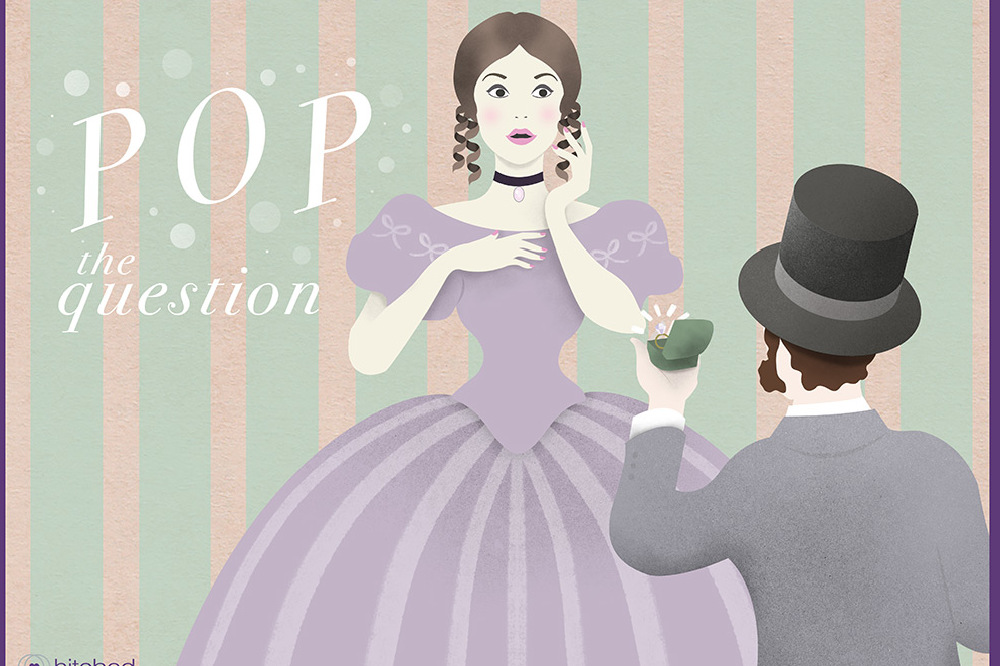
Meaning: To propose the question of marriage to someone.
Since 1725 this phrase was used to describe someone asking something important. It wasn’t until around 1826 that it became a term used for proposing marriage.
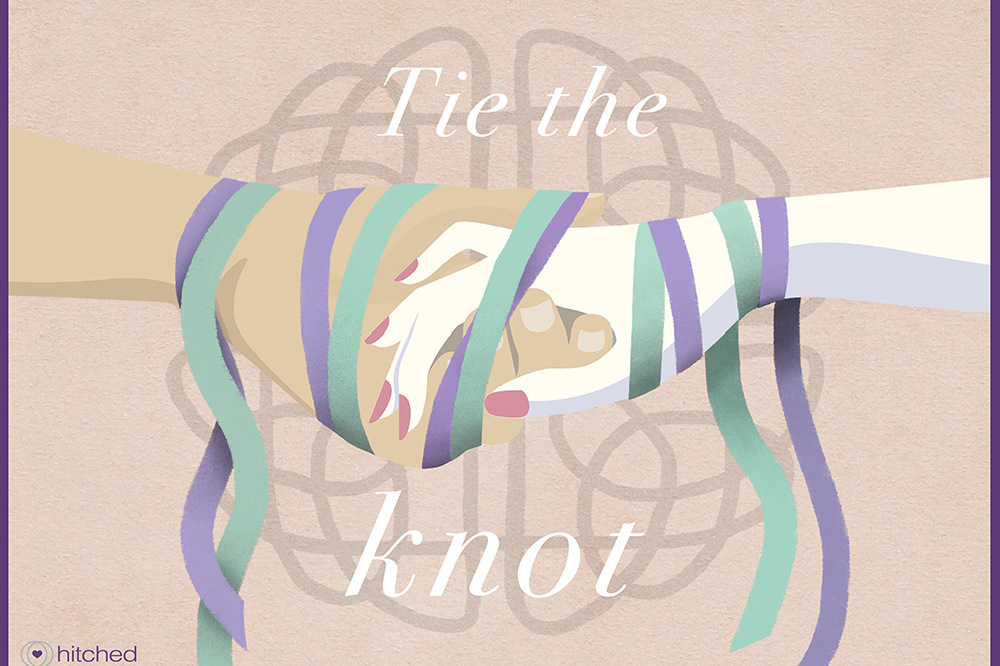
Meaning: To get married.
This popular wedding phrase relates to handfasting unity rituals which have roots in ancient Mayan culture as well as the Hindu Vedic community and the Celts in Scotland. These ceremonies involve tying a couple’s hands together to represent love and unity.
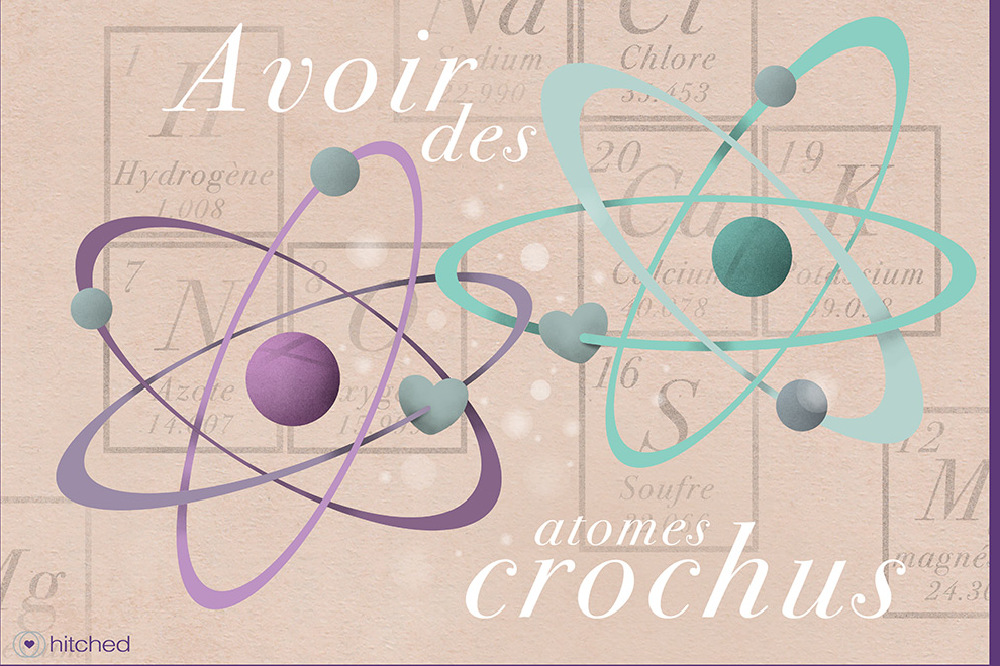
Meaning: Literally means “to have hooked atoms”, but translates, from French, to ‘having great chemistry with someone’.
Originating around 460 and 270 years BC, this Greek phrase came from ancient atomists such as Democritus and Epicure who believed that lovers owed their union to the joining of atoms.
Tagged in married

